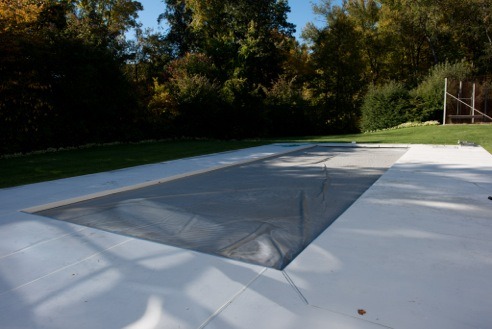
BLOG #125 1/12/2016
Early one fall morning in 2015, my 45/15’ pool, covered and quiet, waits for the action to begin.
What do you think it takes to prepare for and execute a pristinely perfect underwater photography shoot?
Photography is often considered a “quick” medium, especially in these days of ever-present smart phones. But the preparation for complicated pictures, particularly those done for commercial clients whose requirements are as demanding as their fees may be significant, and can take vastly more time than the 1/125th of a second of a shutter’s blink.
Recently, I did a major advertising project for a Japanese cosmetics company that came to me because of my underwater work. The client asked us to agree not to discuss the details of the contents of the shoot until they are ready to launch their campaign.
Honoring that request, I won’t reveal the subject(s) of the shoot. However, I think it would be interesting to demonstrate and discuss the phenomenal preparation required to make beautiful and flawless underwater imagery.
Skilled assistants prepare a 20’x20’ scrim to keep direct (harsh) sunlight off of the pool’s shooting area.
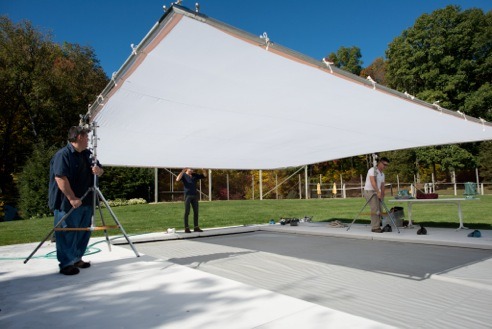
The scrim is secured to the pool deck so that wind won’t act as a sail, take off, and damage everything around it.

A black cloth, with stiffening ribs behind it to keep it against the pool wall, is placed in the shooting area. It will be the background for the photographs. Five assistants, count them (one in the water).

Additional scrims are prepared and placed in the water, then tied down to the deck around the pool. These scrims will be used to direct light toward the model.
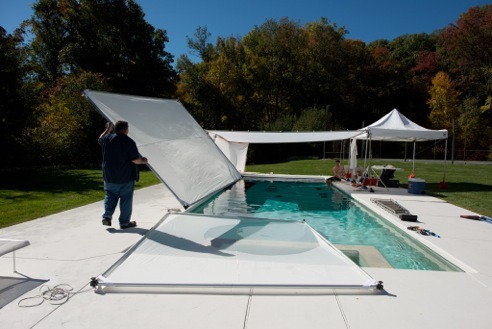
When the set is perfectly prepared, a tent is placed for the assistants and camera when it is not with me in the water. With five assistants, this preparatory work took three hours.

When all is “set” and I am ready to make photographs, my assistant Bart Babinski hands me the camera in its waterproof housing. The water is warmed to a “This is perfect!” temperature. (What do you think that is?).

I position a ladder in the deep end of the pool so that all I need to do is walk down into the water, and then I’m ready to shoot. After 60 seconds, and no more (for safety) of making photographs underwater, I walk back up the ladder to breathe and make “directions.”
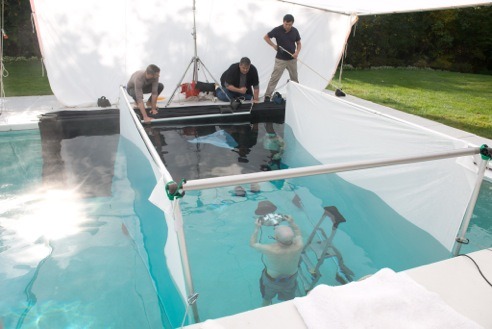
After making a few initial images, I hand the camera to Bart to confirm that the exposure is perfect.
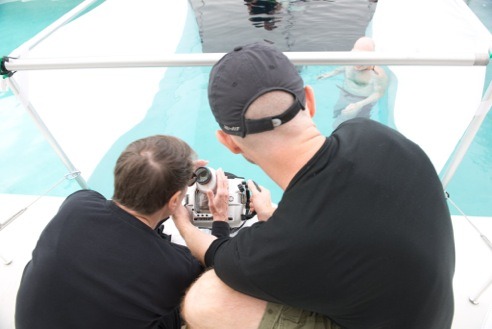
We worked on this project three whole days.The pool was kept at 92 degrees.
Thanks to my good friend Tom Sperduto who made these photographs http://www.tomsperduto.com
